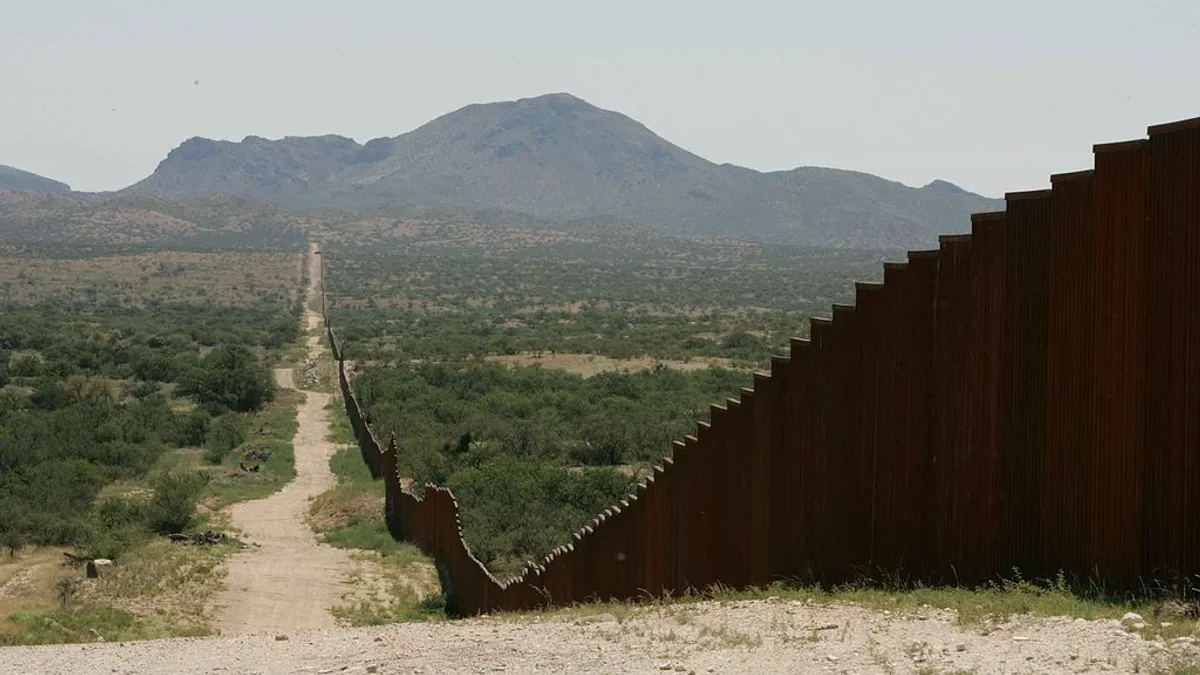To see how this announcement fits into the timeline of border wall construction, click here.
Dive Brief:
- U.S. Customs and Border Protection is soliciting the public's input on its plans to replace a total of 78 miles of U.S.-Mexico border fencing in California and Arizona. The agency is specifically asking for comments on how construction will impact the local environment, culture, commerce, socioeconomics and quality of life.
- One project would replace 15 miles of barrier with new bollard wall in Imperial County, California. In a second notice, CBP is proposing to replace up to 63 miles of pedestrian fencing and vehicle barrier in Arizona with new bollard wall in Pima County (43 miles) and Cochise County (20 miles).
- Both the California and Arizona projects will see the existing barriers replaced with a concrete-filled steel bollard wall. Wall height will be 18 feet to 30 feet, with bollard diameter at about 6 inches by 6 inches.
Dive Insight:
The Arizona projects, according to the Tucson Sentinel, would mean construction along three protected wilderness areas — the 330,000-acre Organ Pipe Cactus National Monument, Cabeza Prieta National Wildlife Refuge and the 2,369-acre San Bernardino National Wildlife Refuge. The Organ Pipe Cactus National Monument has been declared an International Biosphere Reserve by the United Nations, and the San Bernardino National Wildlife Refuge was established to protect a migratory-corridor wetland for wildlife moving between Arizona and New Mexico.
Environmental and other local activist groups are already pushing back against these plans, but if the fencing replacement is deemed critical by the CBP’s governing agency, the U.S. Department of Homeland Security, the federal government will likely waive compliance with regulations that would otherwise prevent it from moving forward. The DHS has already done this for several other segments of border wall construction.
In October, for instance, the DHS waived environmental and other regulations on two Texas border projects — one in Cameron County and the other in Hidalgo County — in order to avoid construction delays in the Rio Grande Valley sector, which the agency says has a high number of illegal entries.
Groups have taken legal action against the government in the hopes of having these waivers declared null and void, but they have been unsuccessful. This includes a lawsuit filed by the State of California and activists trying to halt construction on a border wall project in San Diego County, California. That case went all the way to the U.S. Supreme Court, which rejected arguments that the issuance of the waivers was beyond DHS authority, that the agency’s authority had expired before it issued the waivers and that the DHS decision to waive the regulations violated the Constitution.











